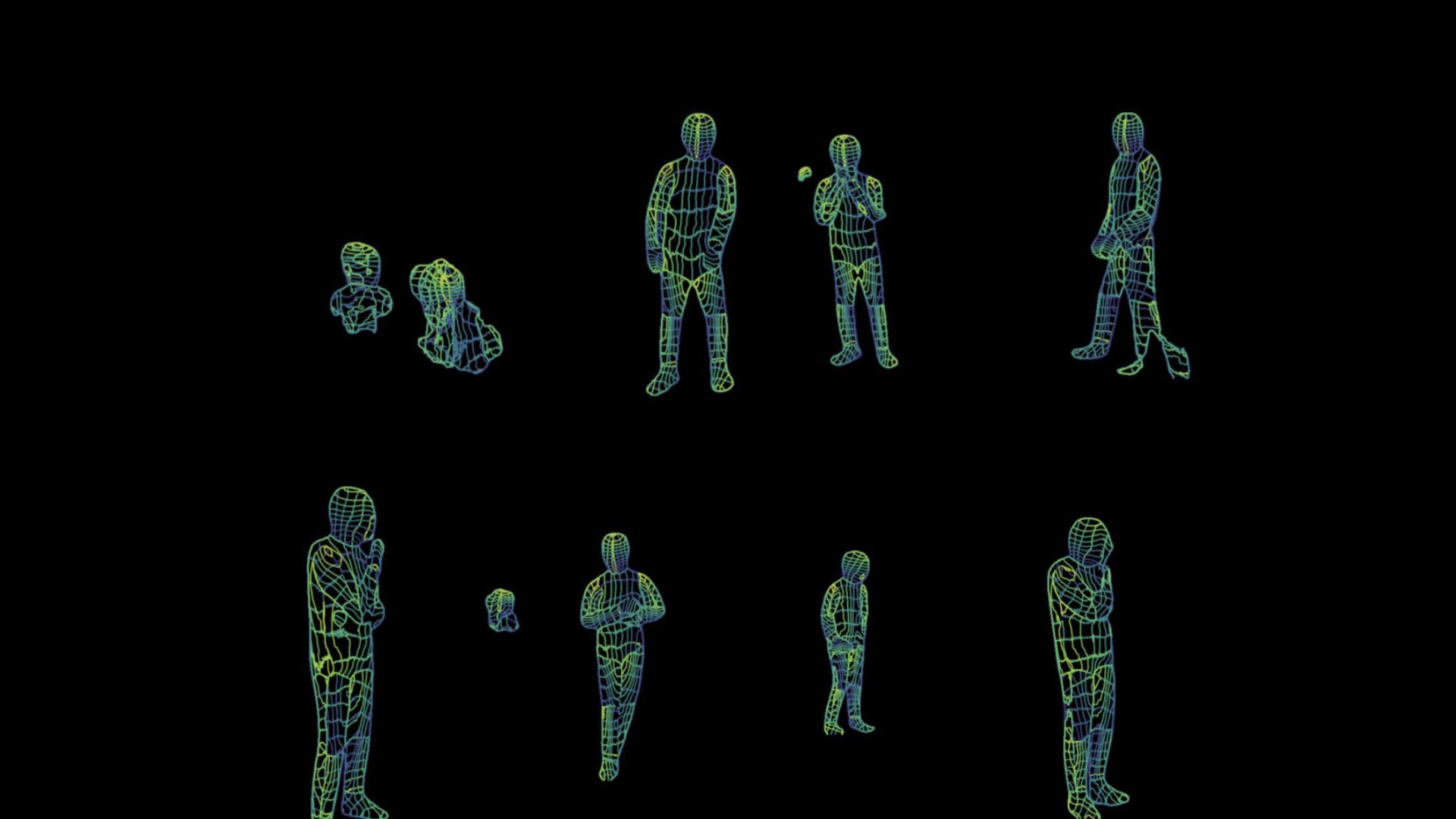Daily Shaarli
June 23, 2024

Scientists Are Getting Eerily Good at Using WiFi to 'See' People Through Walls in Detail
The signals from WiFi can be used to map a human body, according to a new paper.

January 17, 2023, 7:50pm
Researchers at Carnegie Mellon University developed a method for detecting the three dimensional shape and movements of human bodies in a room, using only WiFi routers.
To do this, they used DensePose, a system for mapping all of the pixels on the surface of a human body in a photo. DensePose was developed by London-based researchers and Facebook’s AI researchers. From there, according to their recently-uploaded preprint paper published on arXiv, they developed a deep neural network that maps WiFi signals’ phase and amplitude sent and received by routers to coordinates on human bodies.
Researchers have been working on “seeing” people without using cameras or expensive LiDAR hardware for years. In 2013, a team of researchers at MIT found a way to use cell phone signals to see through walls; in 2018, another MIT team used WiFi to detect people in another room and translate their movements to walking stick-figures.
The Carnegie Mellon researchers wrote that they believe WiFi signals “can serve as a ubiquitous substitute” for normal RGB cameras, when it comes to “sensing” people in a room. Using WiFi, they wrote, overcomes obstacles like poor lighting and occlusion that regular camera lenses face.
Interestingly, they position this advancement as progress in privacy rights; “In addition, they protect individuals’ privacy and the required equipment can be bought at a reasonable price,” they wrote. “In fact, most households in developed countries already have WiFi at home, and this technology may be scaled to monitor the well-being of elder people or just identify suspicious behaviors at home.”
They don’t mention what “suspicious behaviors” might include, if this technology ever hits the mainstream market. But considering companies like Amazon are trying to put Ring camera drones inside our houses, it’s easy to imagine how widespread WiFi-enabled human-detection could be a force for good—or yet another exploitation of all of our privacy.
DensePose From WiFi
Jiaqi Geng, Dong Huang, Fernando De la Torre 31 Dec 2022
Abstract
Advances in computer vision and machine learning techniques have
led to significant development in 2D and 3D human pose estimation
from RGB cameras, LiDAR, and radars. However, human pose esti-
mation from images is adversely affected by occlusion and lighting,
which are common in many scenarios of interest. Radar and LiDAR
technologies, on the other hand, need specialized hardware that is
expensive and power-intensive. Furthermore, placing these sensors
in non-public areas raises significant privacy concerns.
To address these limitations, recent research has explored the use
of WiFi antennas (1D sensors) for body segmentation and key-point
body detection. This paper further expands on the use of the WiFi
signal in combination with deep learning architectures, commonly
used in computer vision, to estimate dense human pose correspon-
dence. We developed a deep neural network that maps the phase
and amplitude of WiFi signals to UV coordinates within 24 human
regions. The results of the study reveal that our model can estimate
the dense pose of multiple subjects, with comparable performance
to image-based approaches, by utilizing WiFi signals as the only
input. This paves the way for low-cost, broadly accessible, and
privacy-preserving algorithms for human sensing.